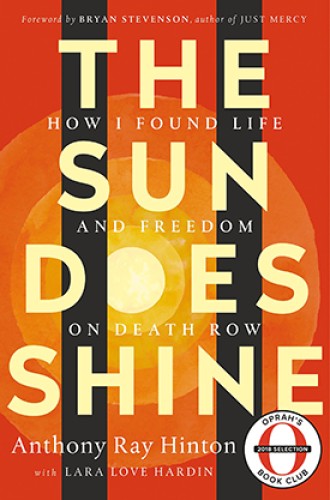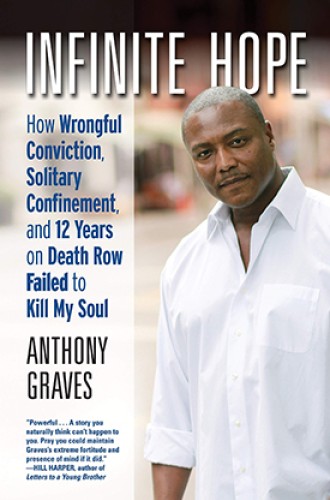Innocent on death row
Two memoirs by men who endured decades of criminal injustice before being exonerated
In 2006, the late U.S. Supreme Court justice Antonin Scalia, a fierce defender of capital punishment, scoffed at the idea that innocent Americans were ever executed. “If such an event had occurred in recent years,” he argued in Kansas v. Marsh, “we would not have to hunt for it; the innocent’s name would be shouted from the rooftops by the abolition lobby.”
When Scalia wrote those words, Anthony Ray Hinton and Anthony Graves were on death row, condemned for crimes they did not commit. Nobody was shouting their names from the rooftops, though a few dedicated attorneys, convinced of their innocence, were struggling to get their convictions overturned. Graves, a Texan, had already been incarcerated for more than 13 years; Hinton, from Alabama, had already spent more than 20 years in prison.
The two Anthonys, both African American, led remarkably similar lives right up to the moment police officers showed up at their homes and took them into custody. Brought up in the rural South by loving, no-nonsense mothers, both men were baseball fans: as a teenager, Hinton hoped for an athletic scholarship, while Graves dreamed of playing for the Houston Astros. Both men enjoyed female companionship: Hinton was thinking about marrying and starting a family; Graves already had three sons. Both men had prior convictions: at age 27, Hinton had voluntarily turned himself in for stealing a car and served several months in a work-release program; at age 22, Graves had voluntarily turned himself in for selling $40 worth of marijuana and served six months in jail. Both men had stayed out of trouble since then. They did not know why the police were handcuffing them and taking them to the station for questioning.
And how could they have known? Hinton was working in a locked warehouse when a restaurant manager 15 miles away was robbed and shot—the third in a string of similar crimes. Graves was asleep in his mother’s living room when six people 35 miles away were shot, stabbed, or bludgeoned to death. Both men had multiple witnesses as to their whereabouts when the crimes were committed. Both men’s alibis were ignored.
If you’ve read Bryan Stevenson’s best seller Just Mercy, a moving and revelatory look at what passes for criminal justice in parts of America, you won’t be surprised at what happened to the two Anthonys after their arrests. False accusations from prisoners who were trying to save their own skins. Mistaken identifications from faulty lineups. Suppressed or manufactured evidence. Expert witnesses who were either unqualified or mendacious. Attorneys who were either incompetent or priced out of reach. Politically motivated prosecutors and judges who were willing to condemn innocent black men in order to rack up more convictions. Repeated refusal to look at the facts.
A white police lieutenant summed up Alabama justice the evening he rode with Hinton to the Birmingham county jail:
You know, I don’t care whether you did or didn’t do it. In fact, I believe you didn’t do it. But it doesn’t matter. If you didn’t do it, one of your brothers did. And you’re going to take the rap. . . . I can give you five reasons why they are going to convict you. . . . Number one, you’re black. Number two, a white man gonna say you shot him. Number three, you’re gonna have a white district attorney. Number four, you’re gonna have a white judge. And number five, you’re gonna have an all-white jury. . . . You know what that spell? . . . Conviction.
Graves, arrested just before his 27th birthday, was exonerated a few months after his 45th. Hinton, arrested at age 29, was exonerated two months before turning 59. That’s a long time to live in a five-by-seven-foot cell, either too cold or blisteringly hot, isolated from other prisoners except for maybe an hour a day in the prison yard, having little contact with the world outside the walls, hearing fellow inmates being escorted to their deaths, always wondering when your number will come up. America may have some comfortable prisons for white-collar offenders, but if you’re poor and on death row, prison is hell.
These memoirs, however, are not just horror stories; they are also stories of grace and redemption. Graves writes: “I came to see my fellow inmates as the abandoned few, left behind by their schools, families, and communities. Surely some were innocent, but even the men who weren’t had at some point been redeemable.” Hinton concurs: “A lot of guys came here and died here without ever getting a visit. A lot of them never had a parent who loved them.”
Graves and Hinton were more fortunate: they had ongoing support from friends, pen pals, and especially their mothers. “A mother’s love was one of the few forces able to break through the state’s contrived obstacles,” Graves says. Hinton’s mother visited him faithfully until her health deteriorated and she could no longer endure the long drive.
Both men reached out to their fellow prisoners. “We all knew grief. We all knew sorrow. We all knew what it was like to be alone,” writes Hinton. “And we all were beginning to learn that you can make a family out of anyone.” Though in solitary confinement, prisoners played chess by calling out positions and moves. Graves started a fantasy football league. Hinton started a book club. Both men read widely, wrote many letters, and eventually connected with dedicated attorneys who doggedly fought for justice—in Hinton’s case, Stevenson and his team at Equal Justice Initiative, who kept appealing right up to the U.S. Supreme Court.
So how do the books differ? The Sun Does Shine, a New York Times best seller, was the summer 2018 selection of Oprah’s Book Club. Written with Lara Love Hardin, it reads like a novel. Of the two books, Hinton’s is the more introspective and religious. Hinton writes about how it feels to live in a prison cell decade after decade with little hope of ever being free again, and how he maintained his sanity in spite of isolation, brutality, and loneliness.
Graves’s book is less philosophical, though he paints a similar picture of life on death row. Having spent a lot of time in his cell reading law books, he pays close attention to legal (and illegal) procedures. Like Hinton, he delivers a searing indictment of what happens to poor black men condemned to death: “I witnessed some of the worst inhumanity imaginable. . . . What I never witnessed during my eighteen and a half years in prison was justice.”
Free at last, both Anthonys now have full speaking schedules, meeting with legislators, lawyers, law enforcement, and celebrities. Hinton works as a community educator for Equal Justice Initiative, and Graves has set up a foundation to promote reforms throughout the criminal justice system. One might think their eventual release supports Justice Scalia’s belief that innocent prisoners are never executed, but a 2014 study by the National Academy of Sciences estimates that one death-row prisoner out of every 25 is innocent. Some of these have been put to death. Scalia may not have known about justice gone terribly awry, but the two Anthonys have lived it—and they are shouting from the rooftops.






